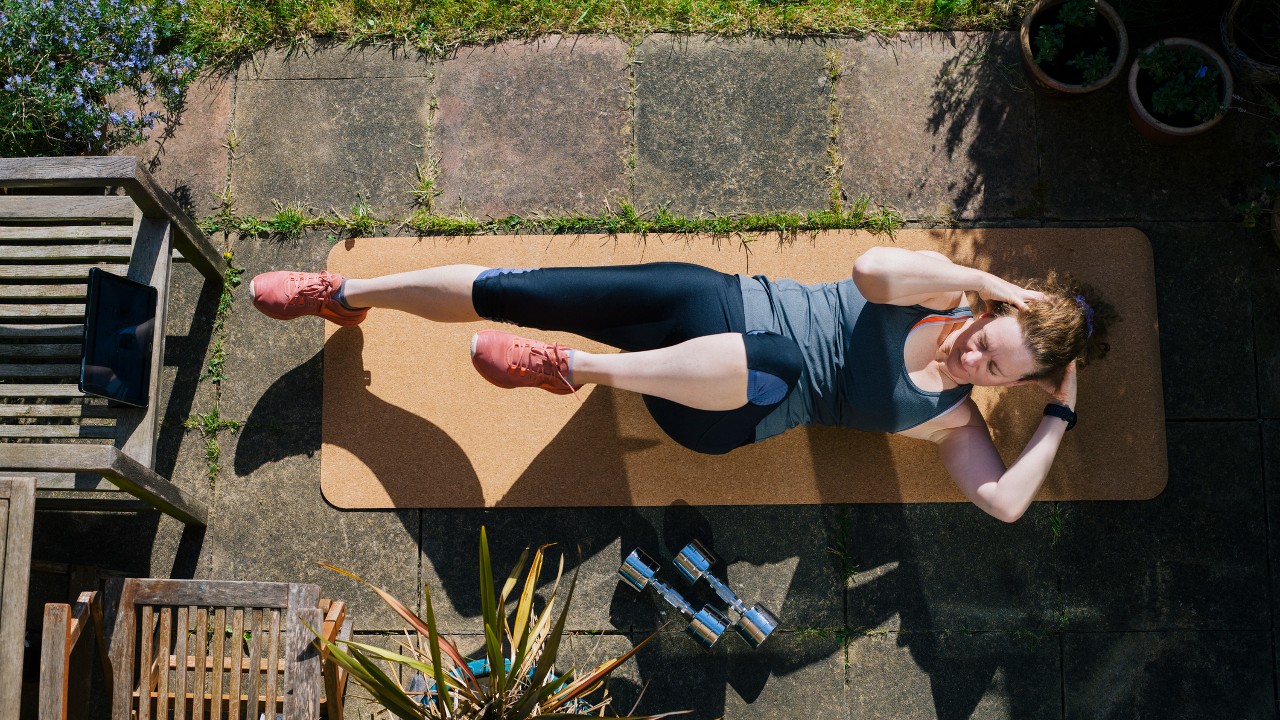How To Do A Bicycle Crunch To Get The Best Results
Strengthen your abs and obliques, and boost your coordination and stability with this simple bodyweight exercise

It gets its name from a cardio favorite, but the bicycle crunch delivers more than aerobic exercise. This simple move will also increase your core strength, improve your posture and help prevent lower back pain.
Performed correctly, the bicycle crunch—also known as the bicycle maneuver—is a great way to target your rectus abdominis, the visible “six-pack” muscles, and your obliques, which run down your sides.
Some would even say it’s the best abs exercise. Back in 2001, the non-profit American Council on Exercise (ACE) supported a study at the Biomechanics Lab at San Diego State University that assessed muscle activity of 13 exercises using electromyography equipment. The bicycle crunch came out top for strengthening the rectus abdominis and second in the rankings of obliques exercises.
It is, of course, a terrible exercise if you don’t do it properly, so here’s how to do a bicycle crunch with perfect form.
How To Do The Bicycle Crunch
Lie on your back with your lower back pressed flat into the floor and your head and shoulders raised slightly. Lift your legs off the floor and bend your knees. Place your hands lightly on the sides of your head—don’t knit your fingers behind or yank your head with your hands at any point during the exercise.
Extend one leg away from you and bring the knee of the other leg toward your chest. As you do so, twist through your core so the opposite elbow comes toward the raised knee. You don’t need to touch elbow to knee; instead focus on moving through your core as you turn your torso. Your elbow should stay in the same position relative to your head throughout—the turn that brings it closer to the knee comes from your core. Think shoulder to knee as you move, rather than elbow to knee.
Lower your leg and arm at the same time while bringing up the opposite two limbs to mirror the movement. Continue, alternating sides each time.
Get the Coach Newsletter
Sign up for workout ideas, training advice, reviews of the latest gear and more.
Bicycle Crunch Form Tips
Cara D’Orazio, certified personal trainer and owner of CGM Fitness, has contributed form tips to help prevent you making some of the most common mistakes she sees. “You want to keep the pelvis anchored,” says D’Orazio. “You don’t want to rock the hips from side to side.”
“Also, you don’t want to pull on your neck. You want to keep your chin slightly off your chest and your elbows should be going across,” says D’Orazio. “So when my right knee is up, my left elbow is going across me to the side, so that way it gets into the full oblique. Some people don’t twist enough but the hips need to stay square.”
Bicycle Crunch Variations
Standing cross crunch
This is an easier version of the exercise that mimics the movement of the bicycle crunch, but from a standing position. Bend at the waist and bring your turning arm down to meet the knee of the opposite leg, which you raise so they meet around your midriff.
Bosu ball bicycle crunch
This variation adds some instability into the mix, which makes your core work harder throughout the move. The Bosu ball has one flat side which sits on the floor, while you rest your back on the inflatable half of the ball.
To use the Bosu ball, lie down so your lower back is resting on the ball but keep your feet on the floor. Then perform the exercise as normal, twisting as you sit up to bring your elbow over to the opposite knee, but return your foot to the floor before raising the other knee. The extra effort of keeping yourself balanced on the ball will mean your core gets tired faster than with standard bicycle crunches, so don’t be surprised if you fall short of your normal sets and reps count.
About Our Expert
Cara D’Orazio is both a certified personal trainer and group fitness instructor. She is certified through the American College of Sports Medicine (ACSM), Aerobics and Fitness Association of America (AFAA) and International Sports and Sciences Association (ISSA).
She is proficient in barre, Pilates, TRX and kettlebell training and is a specialist in sports conditioning. She has created the LETS Werq! format. LETS stands for “lengthen, elongate, tone and stretch” and the format mixes Pilates and barre moves with low-impact cardio.

Nick Harris-Fry is a journalist who has been covering health and fitness since 2015. Nick is an avid runner, covering 70-110km a week, which gives him ample opportunity to test a wide range of running shoes and running gear. He is also the chief tester for fitness trackers and running watches, treadmills and exercise bikes, and workout headphones.
- Lois MackenzieFitness writer









